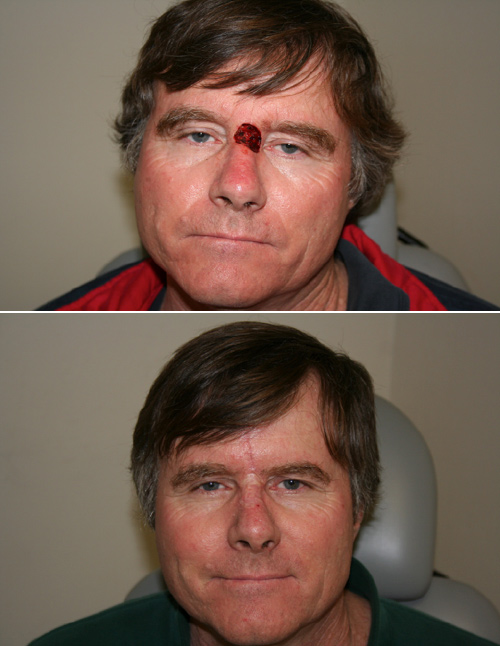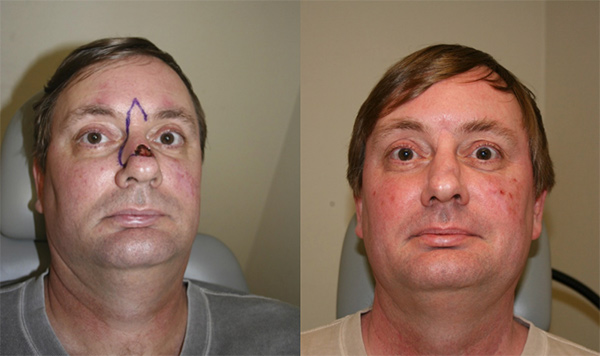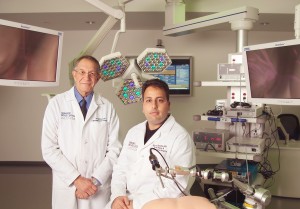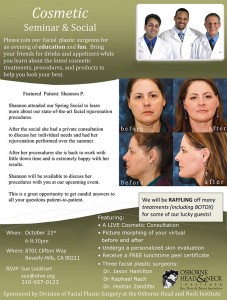- Nasal Skin Cancer Reconstruction - September 22, 2016
- Folded Ear in Newborns: Treatment Options - April 11, 2018
- Newborn Ear Deformity: What Can Be Done? - April 11, 2018
- Ear Molding: An Overview - November 2, 2017
- Otoplasty for Protruding Ears - September 26, 2017
- Basal Cell Carcinoma: Facial Reconstruction Timing - September 26, 2017
- Clinical Considerations of Mohs Reconstruction of Cheek Defect - September 26, 2017
- Basal Cell Carcinoma: Nasal Bridge Reconstruction - September 26, 2017
- Skin Cancers Involving the Eyebrow: Clinical Considerations - October 3, 2016
- Treatment of Multiple Skin Cancer Lesions - June 1, 2016
- Skin Cancer: Nasal Reconstruction and Scar Management - June 1, 2016
Non-melanoma skin cancers are the most common type of cancers overall. They primarily affect areas of the body that are exposed to the sun. The face and the nose are especially at risk to these cancers due to their prominence. These types of cancers are caused by extensive and prolonged exposure to the sun or other sources of UV rays. Those with lighter pigmentation in their skin are also at a higher risk of developing these cancers. If caught early, skin cancer can be immediately removed without spread to adjacent tissues.
Due to its prominent positioning on the face, the nose poses various challenging cosmetic obstacles following skin cancer removal. Alteration to the structure of the nose requires careful consideration of functional elements as well as aesthetic factors. Slight modifications to the nose’s architecture need to be carefully controlled since the naked eye can detect even the smallest of irregularities.
How is the Nasal Region Reconstructed Following Skin Cancer?
In order to plan a nasal reconstruction several initial factors need to be considered by the surgeon, such as:
- Size, shape, and length of the defect
- Region and depth of any incisions the surgeon proposes to make
- Skin graft donor site selection
Skin Grafts: A skin graft is a portion of skin (epidermis) from an area of the body that can be used to cover a nasal defect. Skin donors can be taken from the patient’s neck, forehead, and/or the areas in front and behind the ear. When the graft is placed, new blood vessels will grow from the area of the defect into the graft and the defect will begin to heal on its own.

Dorsal Nasal Flaps: This rotational flap takes tissue from the glabella, an area between the eyebrows, to reconstruct the nasal dorsum and sidewalls of the nose. These donor areas create large enough skin grafts to even cover the tip of the nose.

Local Rotational Flaps: These groups of flaps allow nearby tissue to be repositioned and rotated to cover up a defect. The tissue maintains an attachment to the area it was originally mobilized from.
Nasolabial Flaps: Tissue can be taken from the nasolabial fold, the space between the lip and the nose near the smile line, and transferred to cover the side walls of the nose. Additionally, cartilage from the ear can be used to provide more support. This flap will need a follow up procedure to remove the blood supply and improve cosmesis.
Paramedian Forehead Flaps: The forehead proves a good site for a flap because of the texture and color match of the skin and final scars are minimal. Forehead flaps are most commonly used when the site of the defect is large. Strips of skin can be taken from the eyebrow to the hairline and directly put on the nose. The forehead lining is slightly thicker than the nose’s; therefore, the surgeon will thin down the skin graft in order to match that of the nose. This flap is done in stages and often needs another procedure to remove the pedicle blood supply and another procedure to make the flap more cosmetically appealing.
After the procedure, your surgeon may request you to undergo a dermabrasion. This technique uses microneedles and rough-edged instruments to create pockets and abrade the top layer of skin, temporarily damaging it, to allow new skin cells to replace the areas that have scar tissue from the nasal reconstruction surgery.
Nasal reconstruction following skin cancer excision is a meticulous process and should only be performed by a qualified facial plastic surgeon. These surgeons possess the training and experience to consider the functional as well as aesthetic concerns when reconstructing the architecture of the nose.
Click here to learn more about nasal reconstruction and skin cancer treatment: www.ohniskin.com.



